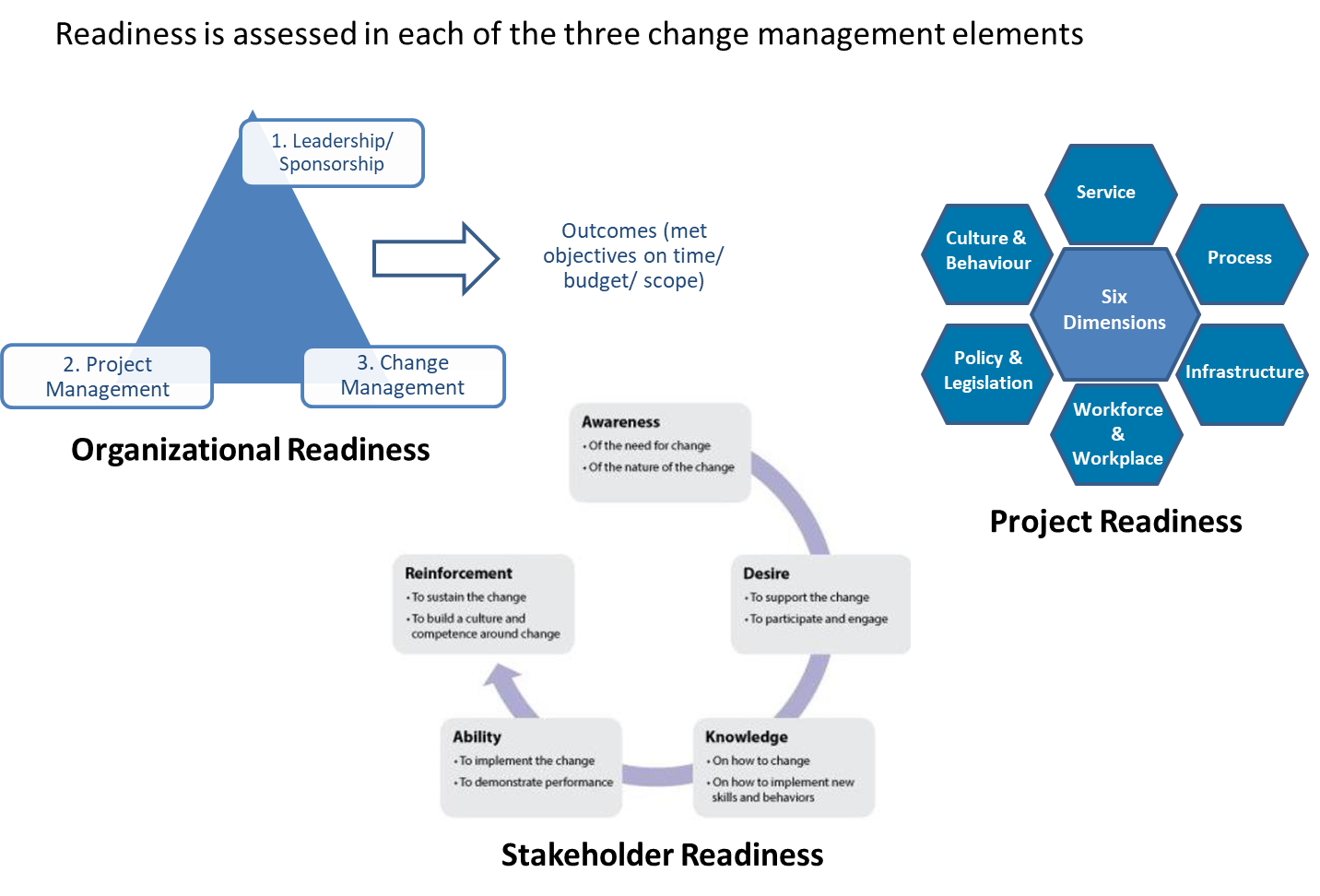Toolkit Nature and Complexity of Change
The Nature of Change questionnaire assesses project complexity and risk and assigns a score that determines levels of change management oversight required for a given change. The nature of change rating determines the extent to which change management tools and practices will be deployed and ultimately the level of management attention and oversight required. This is important to ensure the amount of change analysis and management is relevant to the size and scope of the change effort.
Completion of the questionnaire / tool will identify whether the change aspects associated with a given project are High, Medium or Low.
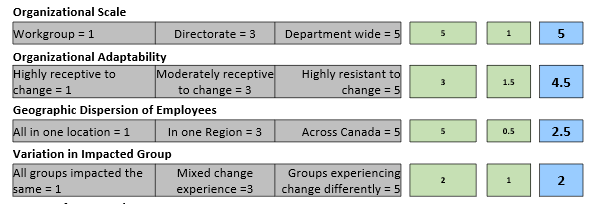

Toolkit Change Management Roles and Responsibilities
The Change Roles and Responsibilities identify the key people that need to play a critical role to drive, integrate, execute and monitor change management strategies and plans. These roles engage stakeholders on the need to change, tell the change story and enlist support to build positive energy and momentum.
Sponsor (Champion) | · Visible and Active – Promotes and supports the change initiative at every appropriate opportunity |
Change Management Team | · Members of the change team may include; o project lead o managers or employees familiar with the work o enablers (HR, Communications, Finance, IT, Procurement, etc) o others impacted by the change, external partners (industry, etc.). |
Change Agents | · Includes functional leaders, middle managers, supervisors, subject matter experts from different areas in the organization · Selected for their network and influence · Model the required behaviours in their areas, provide feedback on change activities and actively engage with others |
Project Manager | · Responsible for integrating the Change Management strategy and key readiness activities into the project plan (PMP or Implementation Plan). |
Toolkit Stakeholder Analysis
The prioritization map below demonstrates the degree of prioritization and customization of change management activities for stakeholders based on their assessed level of influence and impact. With this information tactical change plans can be developed accordingly.

Example:

Toolkit Change Impact Assessment and Readiness Activities (Six Dimensions of Change)
The Change Impact Assessment provides a structured approach to systematically identify, document and assess the relative severity of change impacts associated with a project and how those impacts will affect identified stakeholder groups. Overlooking a potential impact can be devastating to a project. The ultimate objective of the impact assessment is to assess all of the change impacts that will occur and enable significant pro-active planning to increase overall stakeholder readiness well before any changes occurs.
In order to conduct this assessment, the Six (6) Dimensions of Change Model is being used. This assessment supports the identification of change impacts across 6 dimensions and 29 sub-dimensions.
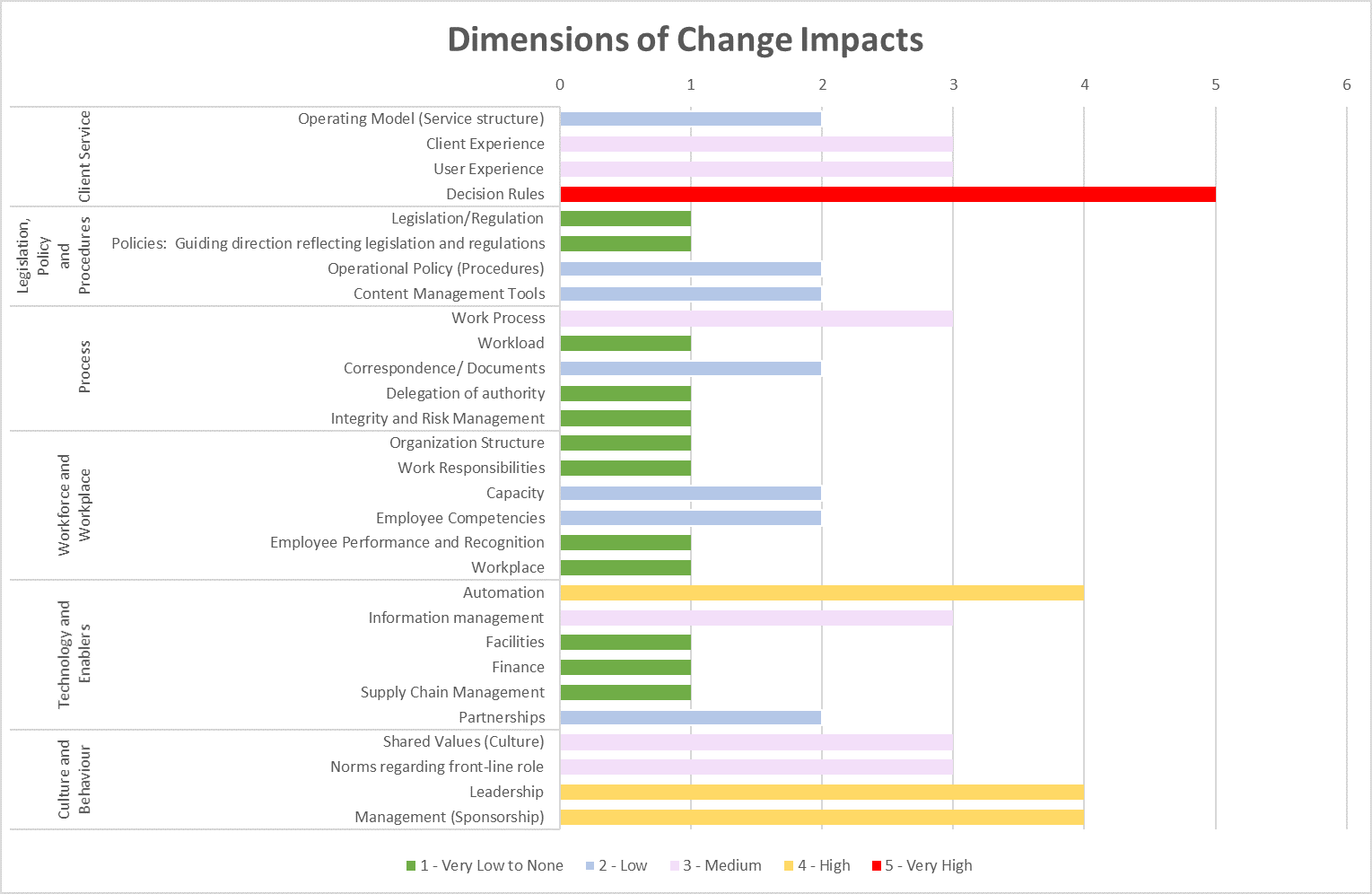
Toolkit Change Strategies and Readiness Plans
A completed impact assessment allows for the identification of readiness activities. Readiness activities are essentially a projects ‘to do list’ to address the change impacts.
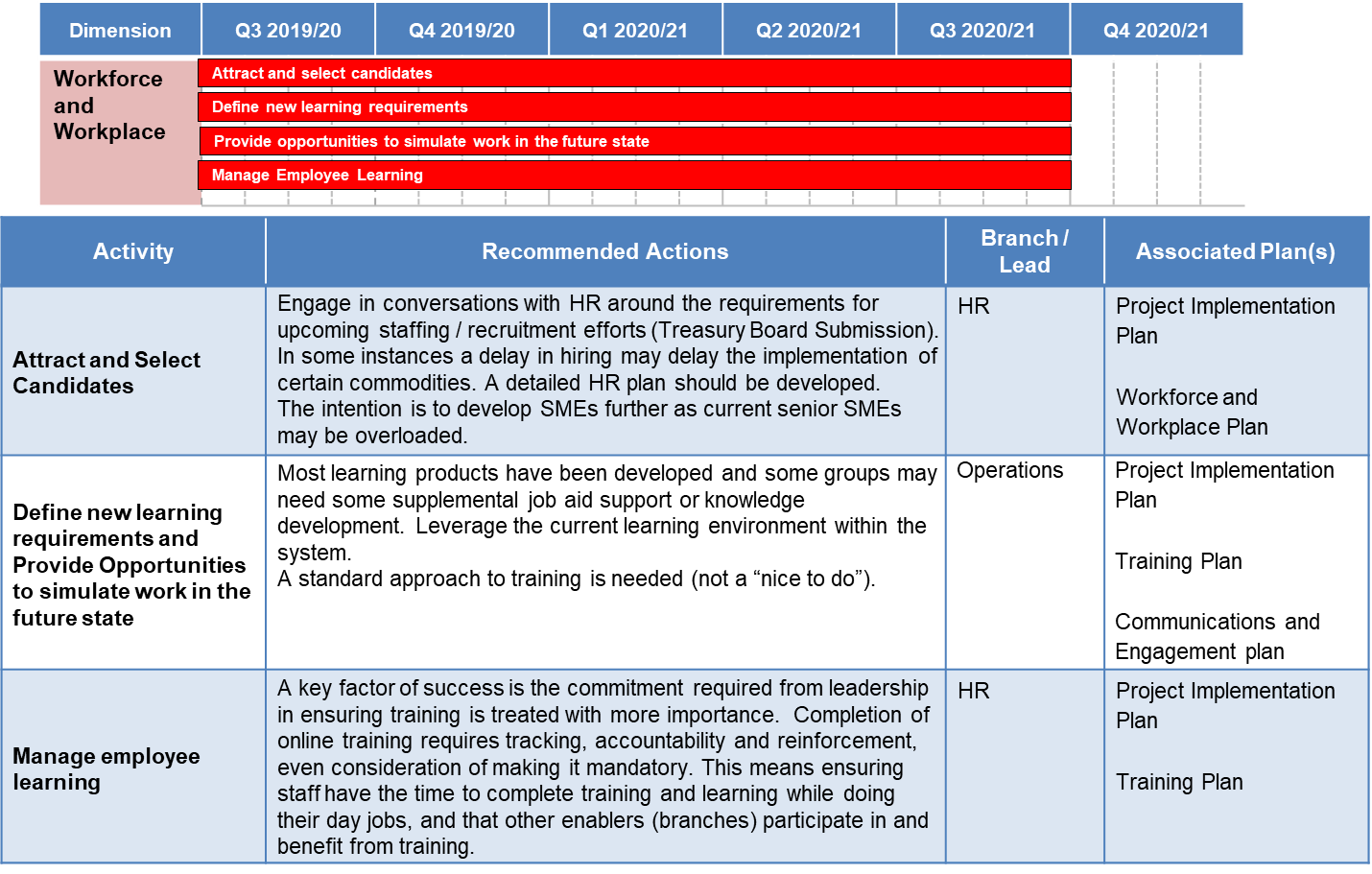
Toolkit Change Risks
As part of the outcomes of the change impact assessment and as readiness activities are evaluated various risks will be identified. Examples included but are not limited to:
• “Too many change activities to complete in a short timeframe with available resources”
• “Risk of industry resistance and/or political risk”
• Identifying key dependencies such as legislative changes that need to occur before other identified readiness activities can begin
• Requirement to engage enabling functions such as HR, Procurement and Finance to provide them sufficient time to scale (i.e. a dedicated team of resources to support a large transformational project)
Those risks are aligned with the identified impacts from the six (6) dimensions of change where the very high impacts are assumed to be high risks requiring mitigations.
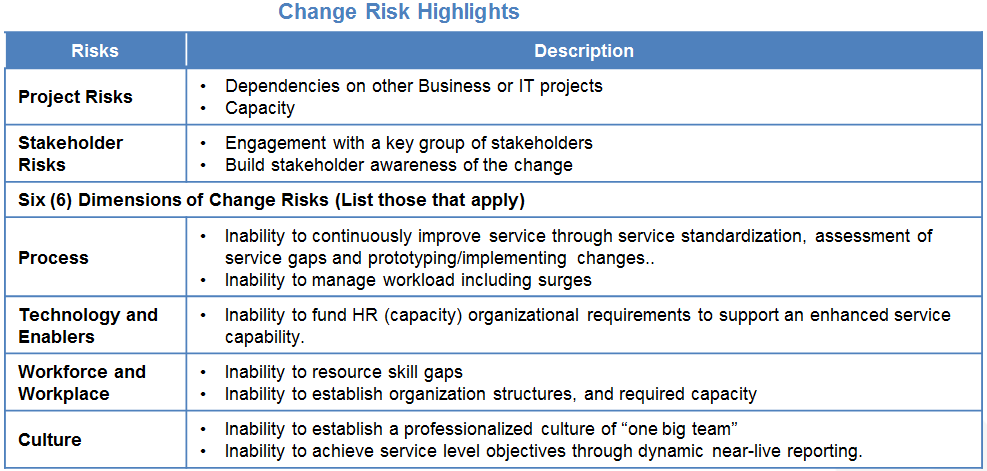
Toolkit Assessing Go Live Readiness
Research shows that over half of all change failures occur due to insufficient readiness before introducing and implementing major change initiatives. The likelihood of encountering resistance or failure increases substantially when organizations are unable to effectively create change readiness before implementation.
Definition of Readiness: A change readiness assessment is a comprehensive analysis of readiness measurements across all stakeholders. It is a formal process for understanding the organization’s ability to effectively manage anticipated change impacts.
There are three main areas of readiness:
1. Organizational (business) readiness;
2. Stakeholder readiness; and
3. Project Readiness.
